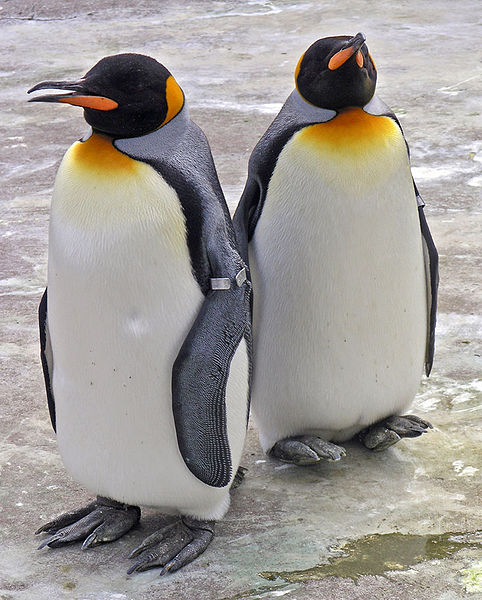Phorusrhacids, colloquially known as terror birds, are an extinct family of large carnivorous, mostly flightless birds that were among the largest apex predators in South America during the Cenozoic era; their conventionally accepted temporal range covers from 53 to 0.1 million years (Ma) ago, and perhaps even up to 21,600 ± 1,000 years ago.
Phorusrhacidae
Phorusrhacinae skulls compared
The Red-legged seriema, the closest living relative of phorusrhacids.
Reconstructed skeleton of Paraphysornis at the Museu Nacional, Rio de Janeiro
Flightless birds are birds that, through evolution, lost the ability to fly. There are over 60 extant species, including the well-known ratites and penguins. The smallest flightless bird is the Inaccessible Island rail. The largest flightless bird, which is also the largest living bird in general, is the common ostrich.
King penguins (Aptenodytes patagonicus). Penguins are a well-known example of flightless birds.
An Okarito kiwi (Apteryx rowi), also known as the rowi
Common ostrich (Struthio camelus). Ostriches are the largest extant flightless birds as well as the largest extant birds in general.
An extinct moa. Until the arrival of humans, New Zealand's only mammals were bats and seals, resulting in many bird species evolving to fill the open niches. While many of New Zealand's flightless birds are now extinct, some, such as the kiwi, kākāpō, weka, and takahē have survived to the present day.








